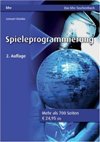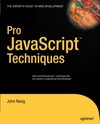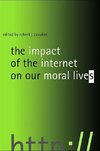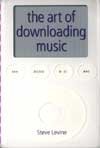
-
 Anglický jazyk
Anglický jazyk
HTML
Autor: Source: Wikipedia
Source: Wikipedia. Pages: 75. Chapters: Unicode and HTML, Ruby character, Transclusion, Dynamic HTML, Meta element, Character encodings in HTML, HTML scripting, Image map, HTML element, XHTML, Comparison of layout engines, List of XML and HTML character... Viac o knihe
Na objednávku, dodanie 2-4 týždne
20.06 €
bežná cena: 22.80 €
O knihe
Source: Wikipedia. Pages: 75. Chapters: Unicode and HTML, Ruby character, Transclusion, Dynamic HTML, Meta element, Character encodings in HTML, HTML scripting, Image map, HTML element, XHTML, Comparison of layout engines, List of XML and HTML character entity references, HTML attribute, HTML5, HTML5 video, Quirks mode, Html5 in mobile devices, Tag soup, Form, Use of Ogg formats in HTML5, HTML e-mail, Comparison of HTML5 and Flash, MHTML, Span and div, Conditional comment, XHTML+RDFa, File select, CE-HTML, Canvas element, HTML Application, Blink element, Marquee element, Font family, Numeric character reference, Microdata, Alt attribute, FHTML, Meta refresh, Microcontent, The HTML Sourcebook: The Complete Guide to HTML, TeX4ht, HTML decimal character rendering, Table cell, Link relation, Scott Isaacs, Blockquote element, RDDL, JHTML, Layer element, XHTML+SMIL, Validator, HTML color names, Canonical meta tag, HOCR, DVB-HTML, Request Based Distributed Computing, HTML sanitization, Nokogiri. Excerpt: HTML, which stands for HyperText Markup Language, is the predominant markup language for web pages. HTML is the basic building-blocks of webpages. HTML is written in the form of HTML elements consisting of tags, enclosed in angle brackets (like ), within the web page content. HTML tags normally come in pairs like . The first tag in a pair is the start tag, the second tag is the end tag (they are also called opening tags and closing tags). In between these tags web designers can add text, tables, images, etc. The purpose of a web browser is to read HTML documents and compose them into visual or audible web pages. The browser does not display the HTML tags, but uses the tags to interpret the content of the page. HTML elements form the building blocks of all websites. HTML allows images and objects to be embedded and can be used to create interactive forms. It provides a means to create structured documents by denoting structural semantics for text such as headings, paragraphs, lists, links, quotes and other items. It can embed scripts in languages such as JavaScript which affect the behavior of HTML webpages. Web browsers can also refer to Cascading Style Sheets (CSS) to define the appearance and layout of text and other material. The W3C, maintainer of both the HTML and the CSS standards, encourages the use of CSS over explicitly presentational HTML markup. The historic logo made by the W3C Tim Berners-LeeIn 1980, physicist Tim Berners-Lee, who was a contractor at CERN, proposed and prototyped ENQUIRE, a system for CERN researchers to use and share documents. In 1989, Berners-Lee wrote a memo proposing an Internet-based hypertext system. Berners-Lee specified HTML and wrote the browser and server software in the last part of 1990. In that year, Berners-Lee and CERN data systems engineer Robert Cailliau collaborated on a joint request for funding, but the project was not formally adopted by CERN. In his personal notes from 1990 he
- Vydavateľstvo: Books LLC, Reference Series
- Rok vydania: 2014
- Formát: Paperback
- Rozmer: 246 x 189 mm
- Jazyk: Anglický jazyk
- ISBN: 9781156043615

 Nemecký jazyk
Nemecký jazyk 










